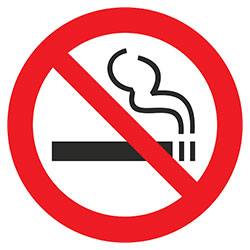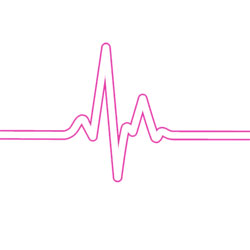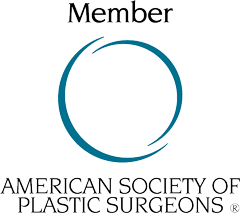What is a Facelift?
A Facelift, also called Rhytidectomy, is a plastic surgery procedure that tightens wrinkles and sagging skin on the face and neck. The goal is a natural, refreshed appearance, helping you look younger without appearing “done”.
There are several types of facelifts, usually referring to which part of the face is being rejuvenated. Variations include:
- Brow lift
- Mid Facelift
- Lower Facelift
- Full Facelift
- Fat transfer to the face
What issues does a Facelift solve?
I feel invisible and want to do something that makes me look more vibrant.
Use AI tools to summarize this page:
A facelift can address concerns in the upper, mid-face, and lower face. Some issues include:
- Chronically tired look, despite feeling rested
- Loose, hanging skin and a 'thin face' relative to the body
- Turkey neck
- Hooded upper eyelids
- Loss of bone structure and definition of cheekbones
- Loss of skin elasticity
How is a Facelift performed?
There are several types of facelifts, and the results depend on the surgeon's assessment during consultation and the surgical techniques used.
"More and more plastic surgery savvy patients come to my office asking for a specific procedure. So what kind of Facelift should you get? The one that fits YOU best, even if it doesn't have a catchy name!" - Dr. Ricardo Rodriguez
During your initial consultation, it's important to explain what "looking younger" means to you. This way, Dr. Rodriguez can determine which procedures will best meet your expectations.
Common Facelift Procedures
1) Brow Lift
A Brow lift elevates the brow and the upper eyelids, giving the eyes a refreshed and rested look. It removes wrinkles from the brow, eliminating the need for Botox. It can also be an alternative to upper eyelid surgery.
2) Mid Facelift
A mid-facelift rejuvenates the cheekbone and lower eyelid area by lifting mid-face structures. A Fat transfer can complement or even replace a mid-facelift in many cases.
3) Lower Facelift
A lower facelift tightens loose skin in the jowl and neck area. If you're only interested in rejuvenating the neck, consider a Neck lift.
4) Full Facelift
A Full facelift addresses the forehead, upper and lower eyelids, mid-face, and lower face and neck. It usually includes a brow lift, mid-facelift, and neck lift. Fat injections are often added to restore volume and improve skin texture, resulting in more youthful, glowing skin.
5) Fat grafting
Fat grafting, sometimes called regenerative fat grafting or a "stem cell facelift," uses your own fat, which contains stem cells. Moreover, these Adipose Stem Cells (ASCs) have regenerative properties, providing increased blood supply and making your skin look more youthful.
Anesthesia Used For Facelift Surgery
To reduce the risk of complications associated with General anesthesia, Dr. Rodriguez uses monitored IV sedation. The anesthesia is administered by a board-certified anesthesiologist for optimal safety.
What are the preoperative requirements?

- Quit smoking 3-4 weeks before surgery.
- Read the Informed Consent document and prepare any questions.
- Stop taking multivitamins, herbals, and aspirin 2 weeks before surgery.
- Get a medical clearance, including a physical exam (H&P) and CBC blood test, within 30 days of your surgery.
- Attend a pre-op appointment to review the surgical plan and sign consent forms.
- Fill all prescriptions before the surgery.
- Do not drink anything after midnight on the night before surgery.
What is Facelift Post-Op recovery like?
Facelift surgery is typically well-tolerated. Most patients experience mild pain and discomfort for 1-3 days. However, swelling and bruising can last up to 4 weeks. Here's what you can expect post-surgery:
- Days 1-2: Drain removal in the office.
- Avoid driving for the first 4-5 days and strenuous activities for at least 4 weeks.
- Follow-up visits: Week 1, Month 1, Month 4.
- Return to work at Week 3.
- Return to regular exercise at Week 4.
Swelling reduces by 90-95% by the end of Month 4, but final results take up to 12 months. Numbness subsides by Month 4, but some patients experience minor numbness for up to a year.
What are the risks and possible complications?

- Swelling and bruising
- Infection
- Hematoma
- Asymmetry
- Skin necrosis
How much does a Facelift cost?
The cost of a facelift depends on the areas being treated.
The most common facelifts performed in 2025 are brow lifts and lower facelifts. This can be done with or without fat grafting.
The Cost of the Brow lift is $5600. When combined with Fat Transfer to the Upper Face, this combination averages around $9,500.
Be aware that price-shopping facelifts can be tricky. Different approaches yield different results, and less invasive procedures generally provide more modest results.
The recent trend is to focus more on Fat grafting and less on dissection for the best facial rejuvenation results.
Can I finance my Facelift?
Yes, financing options are available to help manage the cost of your facelift. Call us at 410-404-8100 or see our financing page for more information.
Dr. R. and the entire staff was absolutely terrific. Have no complaints at all. Thank you.
Ready to explore what's possible? I invite you to schedule a personal consultation, where we can talk about your goals, answer your questions, and create a plan that's uniquely yours.
Schedule Your Consultation Today!
Together, we'll find the perfect approach to help you look and feel your best.

Board Certified Plastic Surgery, ASPS Member
NOTICE
Patients depicted in our before and after galleries have provided their written consent to display their photos online. Every patient is unique, and surgical results may vary. Please contact us if you have any questions.

